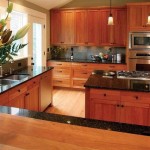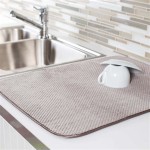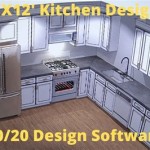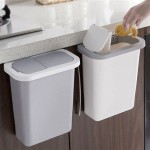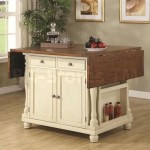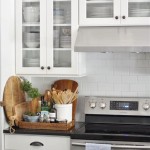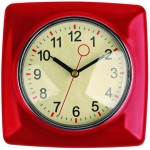Pictures of Kitchens with White Cabinets and Stainless Steel Appliances: Design and Functionality
The combination of white cabinets and stainless steel appliances represents a classic and enduring aesthetic in kitchen design. This pairing offers a versatile foundation suitable for various design styles, from traditional to contemporary, owing to its clean lines and neutral palette. The ubiquity of this combination stems from its ability to create a bright, spacious, and functional cooking environment.
White cabinets, regardless of their specific shade (ranging from stark white to off-white and cream tones), inherently reflect light, making the kitchen appear larger and more open. This is especially beneficial in smaller kitchens or those with limited natural light. Stainless steel appliances, known for their durability and sleek appearance, introduce a touch of modernity and sophistication. The cool tones of stainless steel contrast effectively with the warmth of white cabinets, creating visual interest and preventing the space from feeling sterile.
The popularity of white cabinets and stainless steel appliances is also driven by its adaptability. It serves as a neutral backdrop that allows homeowners to experiment with different backsplash materials, countertop colors, and accent pieces. This inherent flexibility allows for personalization and ensures the kitchen can evolve with changing tastes and trends.
Key Considerations in Designing a White Cabinet and Stainless Steel Appliance Kitchen
Several factors are crucial when planning a kitchen featuring white cabinets and stainless steel appliances to ensure both aesthetic appeal and functional efficiency. These considerations include cabinet style and finish, countertop selection, backsplash design, and overall layout.
Cabinet Style and Finish: The style of the cabinets contributes significantly to the overall aesthetic. Shaker-style cabinets, characterized by their simple, clean lines and recessed panel, are a popular choice for both traditional and transitional kitchens. Slab-front cabinets, with their minimalist design, are well-suited for modern and contemporary kitchens. Raised-panel cabinets, featuring intricate detailing, lend themselves to more traditional or formal kitchen designs.
The cabinet finish is equally important. A high-gloss finish will reflect the most light and create a sleek, modern look, but it can also be more susceptible to showing fingerprints and smudges. A matte finish offers a softer, more subtle look and is generally more forgiving in terms of maintenance. A satin finish provides a balance between the two, offering a slight sheen without being overly reflective.
Countertop Selection: Countertops are a critical element in defining the overall look and feel of the kitchen. When pairing with white cabinets and stainless steel appliances, a wide range of materials and colors can work effectively. Granite and quartz are popular choices due to their durability, heat resistance, and variety of colors and patterns. Lighter countertops, such as white or light gray granite or quartz, will maintain the bright and airy feel of the kitchen, while darker countertops, such as black granite or soapstone, will create a striking contrast and add depth.
Wood countertops, particularly in butcher block style, can introduce warmth and a natural element to the space, softening the cool tones of the stainless steel and white cabinets. However, wood countertops require more maintenance and are prone to scratches and water damage.
Backsplash Design: The backsplash offers an opportunity to introduce color, texture, and pattern to the kitchen. A simple subway tile backsplash is a classic choice that complements both white cabinets and stainless steel appliances. Using a contrasting grout color can add visual interest and highlight the tile pattern. Glass tile backsplashes offer a sleek and modern look, while mosaic tile backsplashes provide an opportunity to introduce intricate patterns and multiple colors.
For a more dramatic effect, consider using a natural stone backsplash, such as marble or travertine. These materials add a touch of luxury and sophistication to the kitchen. A full-height backsplash, extending from the countertop to the underside of the upper cabinets, can create a bolder statement and provide more protection against splashes and spills.
Overall Layout: The kitchen layout should prioritize functionality and ease of use. The work triangle, consisting of the sink, refrigerator, and cooktop, should be efficiently designed to minimize movement and maximize efficiency. Adequate countertop space is essential for food preparation and storage. Consider incorporating features such as a kitchen island or peninsula to provide additional workspace and seating.
Proper lighting is also crucial. Recessed lighting provides general illumination, while pendant lights can add task lighting over islands and countertops. Under-cabinet lighting illuminates the countertop surface for food preparation and cleanup. Natural light should be maximized whenever possible to create a bright and inviting space.
Exploring Different Styles: From Traditional to Modern
The combination of white cabinets and stainless steel appliances seamlessly adapts to various kitchen design styles, allowing homeowners to create a space that reflects their personal preferences. Understanding the nuances of each style is helpful in making informed design decisions.
Traditional Kitchen: In a traditional kitchen, white cabinets are often paired with ornate detailing, such as raised-panel doors, decorative moldings, and antique hardware. Countertops are typically made of granite or marble, adding a touch of elegance and sophistication. Backsplashes may feature intricate tile patterns or natural stone. Stainless steel appliances provide a modern contrast to the traditional elements, preventing the space from feeling overly dated.
Transitional Kitchen: A transitional kitchen blends elements of both traditional and modern design. White shaker cabinets are a popular choice, offering a clean and timeless look. Countertops may be made of granite, quartz, or a combination of materials. Backsplashes often feature subway tile or a simple mosaic pattern. Stainless steel appliances seamlessly integrate into the design, adding a touch of modernity without overwhelming the overall aesthetic.
Modern Kitchen: In a modern kitchen, white slab-front cabinets are typically paired with minimalist hardware and clean lines. Countertops are often made of quartz or concrete, offering a sleek and contemporary look. Backsplashes may feature glass tile or a simple geometric pattern. Stainless steel appliances are an essential element of the modern kitchen, contributing to the overall minimalist aesthetic.
Farmhouse Kitchen: A farmhouse kitchen embraces rustic charm and a relaxed atmosphere. White cabinets are often paired with butcher block countertops and a farmhouse sink. Backsplashes may feature shiplap or a simple subway tile pattern. Stainless steel appliances provide a functional and durable element, while natural wood accents add warmth and character to the space.
Maintaining White Cabinets and Stainless Steel Appliances
Proper maintenance is crucial to preserving the beauty and longevity of both white cabinets and stainless steel appliances. Regular cleaning and preventative measures will help keep the kitchen looking its best for years to come.
White Cabinets: White cabinets, particularly those with a glossy finish, are prone to showing fingerprints, smudges, and splashes. Regular cleaning with a mild soap and water solution is essential. Avoid using abrasive cleaners, which can damage the finish. For stubborn stains, a diluted solution of baking soda and water can be used. It's important to dry the cabinets thoroughly after cleaning to prevent water damage.
Stainless Steel Appliances: Stainless steel appliances are susceptible to fingerprints, smudges, and water spots. Regular cleaning with a stainless steel cleaner and a microfiber cloth is recommended. Always wipe in the direction of the grain to avoid scratching the surface. To prevent water spots, dry the appliances thoroughly after cleaning. Avoid using abrasive cleaners, which can damage the finish. A small amount of mineral oil can be applied to the surface to help protect against fingerprints and smudges.
Preventative Measures: To minimize the need for frequent cleaning, take preventative measures such as wiping up spills immediately and using a range hood when cooking to prevent grease and splatters. Placing mats or rugs in high-traffic areas can help protect the flooring from dirt and scratches. Regularly inspect the cabinets and appliances for any signs of damage and address them promptly to prevent further deterioration.
Investing in high-quality cabinet hardware and appliance accessories can also extend their lifespan. Choose durable materials and finishes that are resistant to wear and tear. By following these maintenance tips, homeowners can ensure that their white cabinet and stainless steel appliance kitchen remains a beautiful and functional space for years to come.

How To Coordinate Your Kitchen With White Cabinets

55 White Kitchen Ideas That Never Go Out Of Style
:strip_icc()/101507003-985e89f6d18940a2b76b12b394b752d4.jpg?strip=all)
30 White Kitchen Ideas To Suit Any Style

White Cabinets With Stainless Steel Appliances Design Ideas
:strip_icc()/102029600-e32e7478c69749e9bf16bff65f19041e.jpg?strip=all)
30 White Kitchen Ideas To Suit Any Style

Diy Small Kitchen Makeover The Home Depot

White Cabinets With Stainless Steel Appliances Design Ideas

4 Cabinet Colors To Pair With Stainless Steel Appliances In 2024

Why Use White Cabinets In A Traditional Kitchen Wood Co
Mixing White And Stainless Appliances Ice Kitchen Remodeling Contractors
Related Posts

